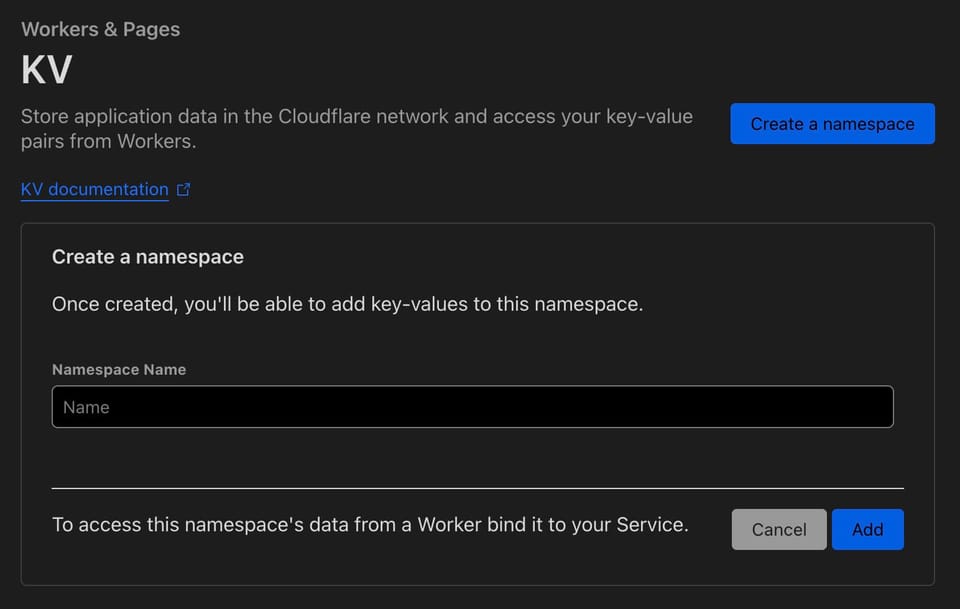🔑 Storing artifacts in Cloudflare KV
Cloudflare KV offers a distributed, high-performance data store ideal for storing build artifacts globally, providing quicker access and improved build efficiency over centralized storage like Cloudflare R2.
Follow these steps to store your build artifacts in Cloudflare KV:
1. Create a KV Namespace
A namespace is a container for key-value pairs in Cloudflare KV. You can create a namespace via the Cloudflare dashboard or using the Wrangler CLI.
Using the Wrangler CLI
wrangler kv:namespace create <YOUR_NAMESPACE>This will create a KV namespace and give you the following output
wrangler kv:namespace create <YOUR_NAMESPACE>
🌀 Creating namespace with title <YOUR_WORKER-YOUR_NAMESPACE>
✨ Success!
Add the following to your configuration file:
kv_namespaces = [
{ binding = <YOUR_BINDING>, id = "e29b263ab50e42ce9b637fa8370175e8" }
]Using the Cloudflare Dashboard
- Navigate to the Cloudflare dashboard and select the
KVtab on the left-hand side bar. - Click the
Create a namespacebutton.
- Enter a name for your namespace and click
Create.
2. Update Your Configuration
Update your wrangler.jsonc file to include the KV namespace details.
{
"name": "turborepo-remote-cache",
// Other settings...
// "r2_buckets": [
// {
// "binding": "R2_STORE",
// "bucket_name": "turborepo-cache",
// "preview_bucket_name": "turborepo-cache-preview"
// }
// ],
"kv_namespaces": [
{
"binding": "KV_STORE",
"id": "ea20b0eb60f44b13b8d013eeace98ca2",
"preview_id": "ea20b0eb60f44b13b8d013eeace98ca2"
}
]
}INFO
If you want to use KV as the store, ensure that the r2_buckets section is commented out.
3. Deploy Your Worker
Once you've updated your Worker script and wrangler.jsonc file, deploy your Worker using the Wrangler CLI or your GitHub actions workflow. And that's it! Your build artifacts will now be stored in Cloudflare KV.
